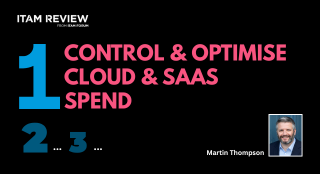Microsoft Pricing Changes: EA Customers Face Price Increases
From 1st November 2025, Microsoft will remove all tiered pricing for Online Services under the Enterprise Agreement. This means all customers renewing or purchasing new Online Services after this date, will receive standard level A pricing for cloud software. The price for online services will now align to the standard “base price”, which will be the same as the web direct price.
This change will affect all EA customers with Online Services within their agreements. This includes products such as M365, O365, or Dynamics 365, imposing an effective price increase of up to 12% for cloud software. While the US Government and worldwide education is excluded, all other public sector/government customers will be affected, as well as both Direct and Indirect EAs.
Enterprise Agreements Tiered pricing
Enterprise Agreements are known for rewarding scale, providing discounts of 6% for level B customers, 9% for level C customers, and 12% for level D. The specific price level applied has always been based on the total seat count, meaning larger organisations receive a higher discount. These discounts will remain for on-premise software purchased via the EA but will no longer apply to cloud/online services.
Why is Microsoft removing price level discounts?
Microsoft has described this change as a way to make their pricing more consistent. It also seems this might be part of their strategy to move customers over to the MCA agreement, focused on consumption-based usage models. Microsoft Partners are focusing on the solutions, rather than price, and highlighting how this change removes pricing inconsistencies. However, at its core, this extreme change represents a huge price hike for the majority of customers.
What to do next?
The good news for many customers is that any existing price protected SKUs will remain protected until your agreement expires. For those with agreements soon up for renewal and/or those facing significant increases, there are a few options to explore:
- Renew prior to 1st October to lock in the current pricing
- Compare your EA pricing to alternative options such as CSP or MCA
- Negotiated discounts are still available for direct agreements. Consider if this is an option for your organisation.
Analyst Perspective
For some time, Microsoft has discontinued new Enterprise Agreements for selected customers and advised them to move to CSP or the new MCA for Enterprise (MCA-E). It appears Microsoft’s long-term goal is to retire the EA and move customers onto more flexible (but also more expensive) subscription agreements. It’s likely this latest change is to help move along this process.
Ultimately, this demonstrates a clear aim to focus discounts on long-term subscription commitments, reducing the appeal of perpetual licensing. This can also be seen with the introduction of the New Commerce Experience for CSP. This allows customers to choose between cheaper, long-term, commitment-based subscriptions,and more expensive, short-term, monthly subscriptions.
Meanwhile, the new MCA-E agreement has no pricing tiers, no price lock, reduced SKU options, and is subscription only. While it might be a more flexible option for customers, the MCA-E is likely to work out significantly more expensive. This might explain why many customers have been reluctant to give up their EAs.
By removing the price-level discounts for Online-Services on the Enterprise Agreement, Microsoft has levelled the playing field somewhat, when comparing the pricing to CSP or MCA-E. This will likely make the move to these alternative agreements feel like less of a cost jump. It may also reduce their lack of appeal for larger organisations.
Conclusion
The removal of these pricing tiers may be painted as a way to standardise cloud pricing. It might also tie in very nicely with Microsoft’s long-term goals of moving customers away from EAs. This is likely part of a larger mission to move customers to long-term commitment-based subscriptions.
With cost increases of up to 12%, it’s important for Microsoft customers to understand their potential exposure and plan accordingly. For those with imminent renewals, it may be possible to renew in advance of these changes to lock in pricing. If this isn’t possible, consider all available options, including moving licenses to CSP or MCA-E.
Can’t find what you’re looking for?
More from ITAM News & Analysis
-
Stop Shadow IT Before It Hurts Your Business
Shadow IT often spreads quietly and quickly becomes a serious risk. Just look at the UK-based supermarket chain Co-op. A little-known remote maintenance tool used by an external IT provider was compromised. The result? Nearly 800 ... -
Why ITAM Forum Should Join the Linux Foundation: My Rationale and Your Questions Answered
TLDR. ITAM Forum has the opportunity to join the Linux Foundation as a stand-alone, self-funded project. This article covers a) What’s happening b) Why I think it’s a great move for the ITAM Forum and c) ... -
Microsoft Pricing Changes: EA Customers Face Price Increases
From 1st November 2025, Microsoft will remove all tiered pricing for Online Services under the Enterprise Agreement. This means all customers renewing or purchasing new Online Services after this date, will receive standard level A pricing ...
Software Licensing Training
Similar Posts
-
Stop Shadow IT Before It Hurts Your Business
Shadow IT often spreads quietly and quickly becomes a serious risk. Just look at the UK-based supermarket chain Co-op. A little-known remote maintenance tool used by an external IT provider was compromised. The result? Nearly 800 ... -
Why ITAM Forum Should Join the Linux Foundation: My Rationale and Your Questions Answered
TLDR. ITAM Forum has the opportunity to join the Linux Foundation as a stand-alone, self-funded project. This article covers a) What’s happening b) Why I think it’s a great move for the ITAM Forum and c) ... -
Shaping the Future of ITAM – We Want Your Input
The ITAM Forum is currently running a survey to capture hot topics and pressing challenges facing the ITAM profession. The insights gathered will guide our editorial focus and community content for the year ahead. Early responses ... -
Tesco Sues Broadcom and Computacenter for £100M
What’s going on? UK retailer Tesco says it bought VMware perpetual licences in 2021 with support and upgrade rights running to 2026, plus an option to extend. After Broadcom acquired VMware, Broadcom stopped selling support for ...




